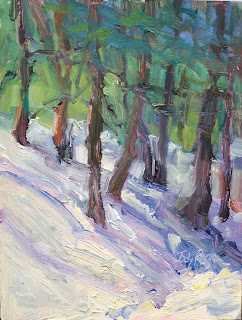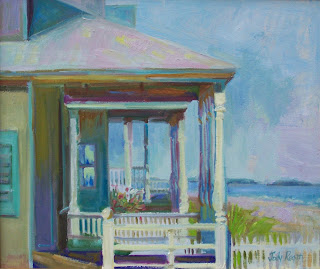 Enjoying a quiet week between the holidays before heading back to school in the new year. We haven't seen more than a token flake or two, happily, on Christmas Day, but it's coming.
Enjoying a quiet week between the holidays before heading back to school in the new year. We haven't seen more than a token flake or two, happily, on Christmas Day, but it's coming.I'm working on something larger in the studio; but thought I'd post the view out the front window from a winter past. There is so much warmth in the snowy landscape. I'll hold that good thought when snow is a reality here this year.





